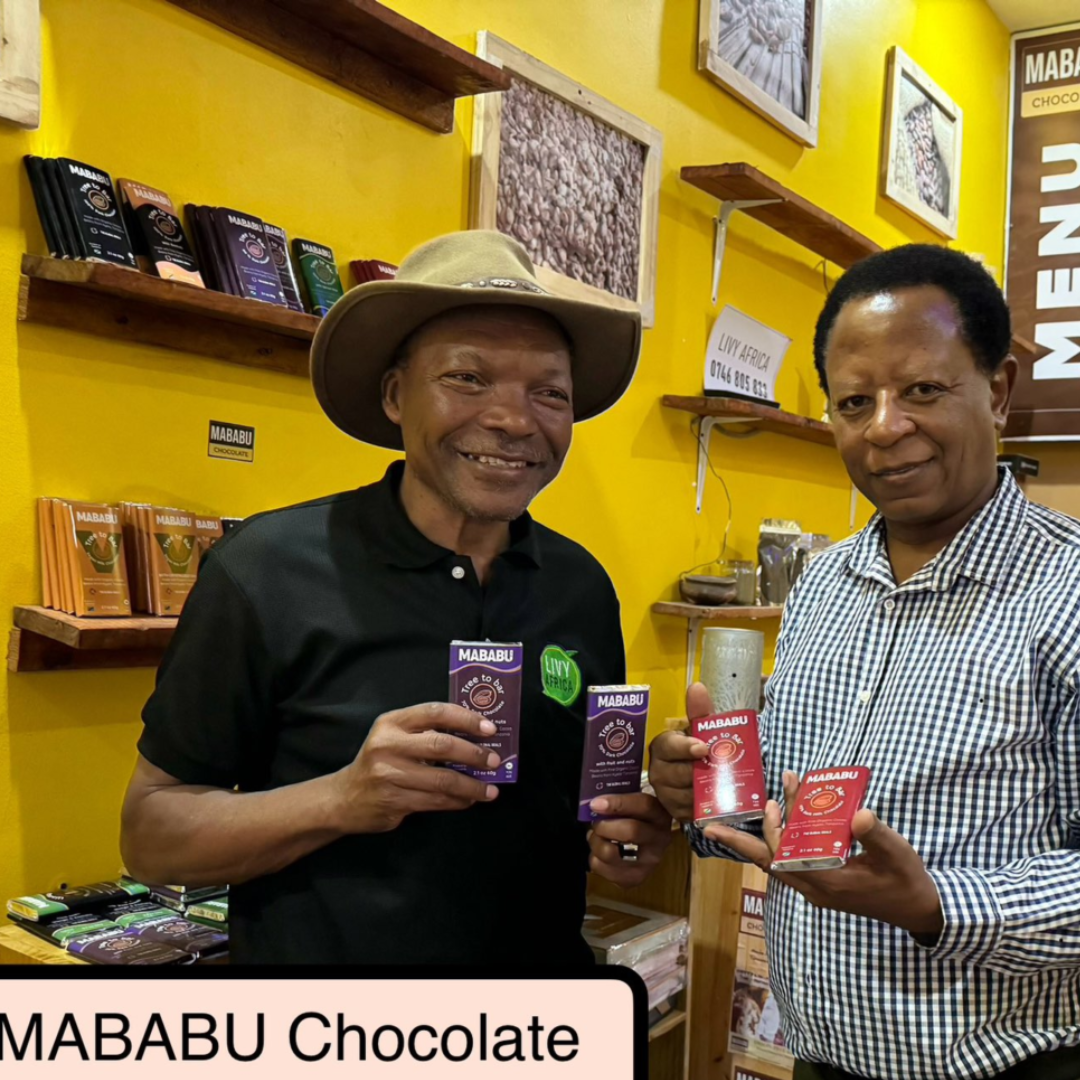Kilimokwanza.org Team
In the lush expanses of Mababu Village, Geoffrey Kirenga, the dynamic CEO of SAGCOT Centre Ltd., unveiled the often-overlooked journey of cocoa during a compelling field visit. “This is more than a cocoa pod; it’s the beginning of the chocolate journey,” Kirenga explained, gesturing towards a cocoa tree. His message was potent and clear: to appreciate chocolate, one must first understand its roots, a narrative frequently veiled from the average consumer.
He is at the serene landscapes of Makwale, within the Kyela District Council of Mbeya, where lies the quaint and picturesque Mababu Village. This charming locale, nestled amidst lush greenery and fertile lands, is not just a scenic spot but a hub of agricultural ingenuity and community spirit. Mababu showcases the resilience and industrious nature of its inhabitants, who have skillfully harnessed the rich soil and favorable climate to cultivate high-quality cocoa. This village, though small, plays a significant role in Tanzania’s cocoa industry, contributing substantially to the region’s reputation as a producer of some of the finest cocoa. The community’s commitment to sustainable farming practices and quality production has not only elevated their livelihoods but has also put Mababu on the map as a symbol of agricultural excellence and sustainable development.
The tour offered a unique insight into the complex and labor-intensive world of cocoa farming. An experienced farmer demonstrated the art of harvesting cocoa pods, underscoring the vital importance of sustainable practices in preserving the quality of the crop. “What unfolds here,” Kirenga pointed out, “is the foundation of chocolate production, a process that begins with these very pods.”
But the story of Mbeya’s cocoa extends far beyond the fields. Kirenga shed light on the subsequent phases, where cocoa pods undergo meticulous processing before being sent off to factories, eventually emerging as the globally beloved chocolate bars. “We’re witnessing the transformation of these pods into processed cocoa, a key step in the journey towards creating chocolate,” he elaborated.
Central to this transformative process is Mababu Chocolate, a brand born in the village of Mababu. This brand is a symbol of more than just quality chocolate; it represents the region’s dedication to ethical practices, quality, and community empowerment. Celebrated for its fair trade principles and for strengthening the local cocoa farming community, Mababu Chocolate is a show of the region’s commitment to excellence.
Nestled near Lake Nyasa’s southern shores, the Mbeya Region is not merely a scenic spot in Tanzania; it’s a powerhouse in the country’s cocoa industry, contributing a remarkable 90% to Tanzania’s overall cocoa production. The Kyela district alone is responsible for about 80% of the nation’s cocoa, with Rungwe District contributing an additional 10%. In this fertile land, an extraordinary narrative is unfolding—one marked by passion, transformation, and steadfast dedication to sustainable cocoa farming practices.
At the forefront of this green revolution is Mababu Chocolate brand, named after the village which has become popular and may revolutionize the future of the cocoa industry, in Tanzania, together with other local brans.
This enlightening exploration into Mbeya’s cocoa farming highlights the collective efforts to promote transparency and sustainability in the chocolate industry. With visionaries like Geoffrey Kirenga leading the charge, the future of cocoa farming in Mbeya looks not only sustainable but also bright with hope and innovation.
The Evolution of Cocoa in Mbeya, Tanzania: A Journey Through Time
Embracing Renewal in Mbeya’s Cocoa Industry: In recent years, Mbeya’s cocoa sector has experienced a resurgence, marked by focused efforts from the Tanzanian government. Initiatives aimed at bolstering farmer support, enhancing infrastructure, and advocating for sustainable practices have been pivotal. Additionally, the distinctive flavor and quality of Mbeya’s specialty cocoa have garnered increasing attention and appreciation globally.
Origins and Growth: The Seeds of Change: Cocoa’s introduction to Mbeya can be traced back to the early 1900s by German colonists. Yet, it was post-independence in 1961 that marked a significant turning point. Tanzanian farmers, recognizing the crop’s potential for generating income and improving livelihoods, rapidly adopted cocoa cultivation, setting the stage for a thriving industry.
Prosperity and Expansion: The Flourishing Era: The decades of the 1970s and 1980s were a golden age for cocoa production in Mbeya. During this period, Tanzania rose to become the world’s fourth-largest cocoa producer, with Mbeya playing a central role in this remarkable achievement. The government’s supportive measures, such as price stabilization programs and infrastructural development, were instrumental in this success.
Navigating Hardships: The Era of Challenges: The late 1980s and 1990s marked a period of struggle for the Mbeya cocoa industry. A confluence of factors contributed to this decline, including fluctuating global cocoa prices, the liberalization of Tanzania’s economy, and challenges related to aging cocoa trees.
The Continuing Saga of Mbeya’s Cocoa: The story of cocoa in Mbeya is a rich tapestry of highs and lows, innovations, and challenges. It reflects the dynamic nature of agriculture and global markets, as well as the resilience and adaptability of the Tanzanian people. As the industry continues to evolve, the future of Mbeya’s cocoa promises new chapters of growth and transformation, continuing its fascinating journey through time.
